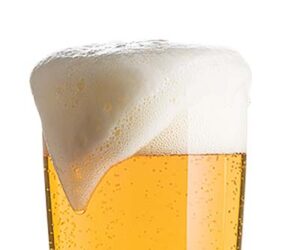Wheat Beer Brewing: Tips from the Pros
Brewer: Greg Zaccardi
Brewery: High Point Wheat Beer Co., Butler, N.J.
Years of experience: 2.5
Education: Bachelor’s degree in chemistry from University of California, Santa Cruz
House Beers: Kristall, Winter Wheat, Blonde, and Dark
From milling through every other stage, brewing wheat beer is different than brewing any other beer. You need to mill with a finer setting for wheat. But make sure your mill setting is not too fine, otherwise you can really stick your mash. Wheat is a little denser and harder to crack because the kernels are smaller. Make the mill setting tighter than for barley or the wheat will go right through without cracking.
Typically, Bavarian wheat beers, like those we make, consist of 50 percent wheat and 50 percent barley. American wheat beers usually contain 20 to 30 percent wheat. But the real difference is the yeast. We use a traditional Bavarian-style yeast strain that can only be found in Germany. It gives our beer an incredibly rich and complex flavor and aroma. In the United States brewers use a standard ale yeast for American wheat beers. That gives the beer a light, almost bland flavor.
For homebrewers the availability of yeast is a little more restricted. If you use a classic American ale yeast, such as Chico ale or American ale yeast, and you are using some wheat, that yeast will just make it a light-tasting beer, not flavorful or aromatic. Even an English-style ale yeast will not give wheat beer a real rich clove and banana aroma or flavor. The closest thing homebrewers can get to a traditional Bavarian yeast is Weihenstephan, or Wyeast 3068. It gives beer more banana and bubble-gum aromas.
Yeast management for this strain is involved. You need a good, healthy yeast strain. I recommend making a substantial starter. Make sure it’s vibrant and has the right population of yeast cells. If you want consistency, it has to be clean and active. A starter should be pitched at high kraeusen. It’s not a yeast that can lie dormant for a while and then be pitched.
Oxygenate your wort as best you can. The temperature for fermenting should be 70° F; from 68° to 72° F is a good range. The warmer the beer is fermented, the more esters you will get. If you’re looking for heavy-duty banana aroma or bubble gum, ferment at 72° F. If you oxygenate correctly, the starter is good, and the pitching amount is right, expect the wort to be fully fermented in three to five days. This yeast is not highly flocculent. Some US pale-ale yeasts will drop right out, but this Bavarian strain will give you cloudiness.
The difference in texture between barley and wheat affects lautering. The more wheat a recipe has above 50 percent, the slower your lautering will be. For all-grain brewing you want to: 1) Dough in very thoroughly. First hydrate the grain as best you can, so the grain does not ball up into clumps. The grain and water should be evenly blended for mash in. 2) During lautering be prepared to use some method of cutting the grain bed very delicately. Use a stick, canoe oar, or a long stainless steel serving spoon to cut through the grain bed to ensure no channeling or the “concrete effect.” Begin lautering slower than with an all-barley brew so you don’t draw the grain right into the screen.
The components of wheat are different than barley. Wheat has more protein. That’s the number one reason for a slow run-off. But that liability is also an asset once you open and pour the beer, because it gives it a nicer head. Look for a good boil to get a hot break and coagulated protein.
The only beer we brew that is filtered is Kristall, a malty wheat bouquet with hints of clove and apple. It has a creamy head and is balanced and crisp. Not filtering increases the stability of the beer because yeast remains in the beer. Yeast consumes oxygen, therefore you don’t have oxidation. It also acts as a natural guardian against bacteria.
About 12 to 15 hours after brewing, once you’ve added yeast, rack the beer off of the cold break to another fermenter.
The Tips
• Use a good, healthy yeast strain and make a good starter using vibrant yeast with the proper cell count.
• Oxygenate your wort as best you can and ferment between 68˚ and 72˚ F.
• Hydrate the grain, mash in thoroughly, and prepare a method for cutting the grain bed.
• Mill wheat using a finer setting than you would for barley. But make sure the milled wheat is large enough to avoid a stuck mash.


